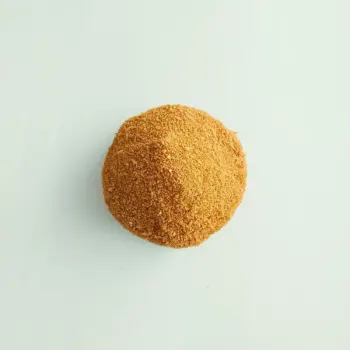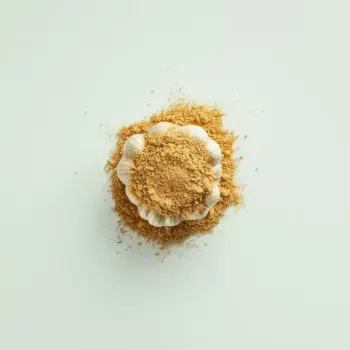Asafoetida and garlic powder are distinct spices used to flavor dishes. Asafoetida, a pungent resin, is strong and used in tiny amounts, while garlic powder, made from ground garlic, is milder and versatile in various cuisines.

Asafoetida, also known as hing, is a resin derived from a species of giant fennel. It has a pungent, sulfuric smell when raw but imparts a savory, onion-like flavor when cooked.

Garlic Powder is made from dehydrated, ground garlic cloves. It delivers a milder, less pungent flavor than fresh garlic, but is convenient and has a long shelf life.
Asafoetida has a very strong, concentrated flavor and is used in minute quantities, whereas garlic powder is milder and can be used more generously. The texture of asafoetida varies from a fine powder to a hard resin, while garlic powder is always granulated or powdered. Asafoetida is commonly used in Indian cuisine, while garlic powder is more versatile and widely used globally.

Your ultimate Recipe Box, Meal Planner, and Cooking Class all in one
Best used in dals and lentil soups, asafoetida enhances earthy flavors. It's key in many Indian recipes and aids in digestion. A pinch is enough to add depth to your lentils. Garlic powder suits lentil dishes of all kinds, especially in Mediterranean cuisine. It imparts a gentle garlic backdrop and marries well with other spices and herbs.
A small amount of asafoetida can replace onion and garlic in stir-fries, perfect for those avoiding these ingredients. It's less common but adds a unique flavor profile. Garlic powder is a go-to for quick and flavorful vegetable stir-fries. It provides a familiar garlic taste without the need for fresh cloves, saving time in the kitchen.
In meat marinades, asafoetida is less common but can be used sparingly to bring a bold aroma to lamb or goat dishes, particularly in Middle Eastern recipes. Garlic powder is versatile in meat marinades, offering a subtle yet aromatic garlic flavor. It's excellent for chicken, beef, and pork, and complements other spices well.
Asafoetida is used in such small quantities that its nutritional impact is negligible, while garlic powder can contribute to your intake of manganese and vitamin B6.
| Nutrient | Asafoetida ( per Teaspoon ) | Garlic Powder ( per Teaspoon ) |
|---|---|---|
| Fat | Negligible | 0g |
| Sodium | Negligible | 1mg |
| Calcium | Negligible | 1% |
| Protein | Negligible | 0.5g |
| Calories | Negligible | 10 |
| Carbohydrates | Negligible | 2g |
Yes, asafoetida can be a good substitute for garlic in cooking for those with garlic allergies, but start with a small pinch due to its potency.
As both are used in different quantities and have different nutritional profiles, one is not necessarily healthier than the other. It depends on dietary preferences and requirements.
Store both asafoetida and garlic powder in airtight containers in a cool, dry place to preserve their flavors.
Asafoetida is often used in vegan cooking to add a depth of flavor similar to onions and garlic, so it can replace garlic powder in many vegan recipes.
No, asafoetida has a unique and potent flavor that is different from the milder taste of garlic powder. Their flavors are not interchangeable but can complement each other.